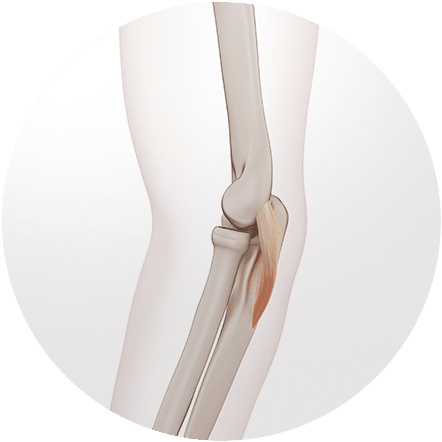Cubital Tunnel Syndrome and Surgery
Cubital tunnel syndrome is a condition that occurs in two forms:
- Ulnar nerve entrapment: Occurs when the ulnar nerve becomes compressed or irritated along its pathway, leading to symptoms such as tingling in the pinky finger, muscle weakness, and aching pain, especially with the elbows bent for extended periods.
- Ulnar nerve compression: Ulnar nerve compression is a compressive neuropathy where pressure on the ulnar nerve near the medial epicondyle causes numbness, tingling, and possible muscle wasting in the ulnar half of the hand, especially affecting the ring finger and little finger.
When the ulnar nerve is entrapped, stretched, or compressed by structures like the medial epicondyle, the ulnar nerve travels around the inner side of the elbow joint.
Symptoms of Ulnar Tunnel Syndrome
Symptoms can be similar to carpal tunnel syndrome and usually include numbness or tingling in the fingers, pain in the forearm, and weakness in the hand. These periods of numbness can become chronic over time and more noticeable when the arm is bent or while sleeping. Individuals with cubital tunnel syndrome may have difficulty gripping or moving their fingers. If left untreated, it may cause coordination difficulties and reduce muscle strength in the hand.
Patients curious about how getting cubital tunnel syndrome diagnosed should be aware that prior fractures, bone spurs, or elbow swelling may increase their risk of developing it. In addition, those who participate in sports activities such as tennis that require repetitive flexing of the elbow may be at a higher risk. The surgical procedure for cubital tunnel injury releases the ulnar nerve from the incorrect positioning. Cubital tunnel injury surgery may also prevent cubital tunnel syndrome from recurring in patients.
Patients curious about how cubital tunnel syndrome is diagnosed should be aware that prior elbow fractures, bone spurs, or soft tissue swelling around the medial epicondyle may increase their risk of developing this type of ulnar nerve entrapment. In addition, individuals who participate in sports or occupations that require repetitive elbow flexion are more prone to ulnar nerve compression. A thorough physical examination and nerve conduction studies are often used to diagnose ulnar neuropathy at the elbow.
Ulnar Nerve Entrapment Treatment
When appropriately diagnosed, cubital tunnel syndrome can be treated with cubital tunnel surgery to relieve pain and restore function. Ulnar nerve transposition is typically recommended when ulnar nerve entrapment at the cubital tunnel causes ongoing ulnar nerve compression behind the medial epicondyle, leading to symptoms like numbness, tingling in the ring and little fingers, muscle weakness, and worsening neuropathy at the elbow due to prolonged elbow flexion or anatomical narrowing.
Typically, the cubital tunnel release procedure is performed under general anesthesia in an outpatient setting. Patients can return after their ulnar nerve surgery to their home the same day. After cubital tunnel release surgery, the elbow may be placed in a splint that enables the use of the hand. Some discomfort, pain, and limited mobility should be expected a few weeks after the surgical procedure. Recovery after surgery is typically 3-6 weeks.

Related Blog
What is Cubital Tunnel Syndrome and Why are My Fingers Numb?
Pain has a protective purpose. What is Cubital Tunnel Syndrome? When you get numbness or tingling in your ring and small finger for no apparent reason, that is usually caused by a condition called cubital tunnel syndrome. One of the major nerves of the arm, called the ulnar nerve, is responsible for powering several of the muscles in the forearm…
Schedule a Consultation
Dr. Goldberg can help assess and determine the best surgical treatment for you. Schedule your appointment today with one of the most experienced elbow surgeons in the Southwest Florida area!


